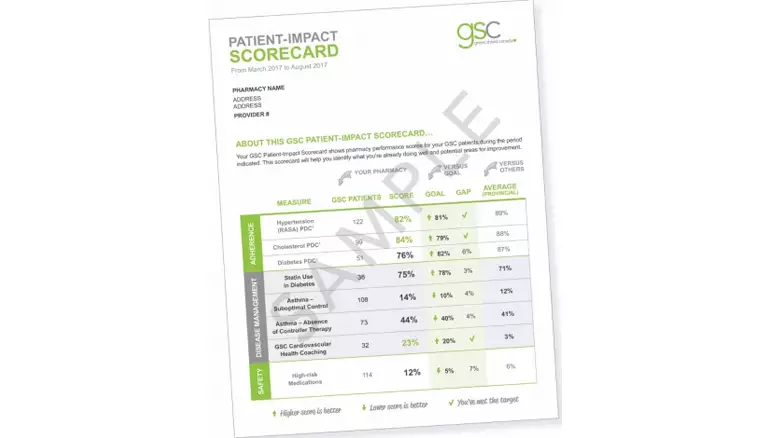
JANUARY 2018 – When Green Shield Canada (GSC) launched its Value-Based Pharmacy (VBP) program in October 2017, it also launched a lively debate with pharmacy associations and pharmacies. Why did it launch such a program? Will it eventually lead to lower reimbursement levels for pharmacies? What metrics are used to measure the quality of pharmacists’ services? And why hire a U.S. provider?
Leila Mandlsohn, Pharmacy Strategy Consultant at GSC, took to the podium at the Canadian Foundation for Pharmacy’s 2017 Pharmacy Forum to answer these and other questions.
By way of background, she explained that more of the insurer’s clients are asking for cost-containment strategies such as capped fees, capped coverage and the removal of coverage for certain (usually higher-cost) drugs. Rather than encourage clients to go down that road, GSC took a closer look at quality improvement programs being put in place on the public side (for example, Ontario’s Excellent Care for All Act that includes performance-linked compensation models for hospital executives).
“That led us to ask, how can we ensure plan members are getting access to the care they need, and plan sponsors are getting value for what they spend?” said Mandlsohn, who added that “the evidence shows that measuring quality does improve patient outcomes.
GSC decided to partner with Pharmacy Quality Solutions (PQS) in the U.S., an established provider of performance measurement services for public and private payers and pharmacies, rather than create a proprietary program or work with a Canadian provider that would have had to start from scratch. PQS is a licensed user of the standardized, nationally adopted performance measures developed by Pharmacy Quality Alliance (PQA), a non-profit organization established in 2006 and prompted by the federal government’s new Medicare Part D prescription drug plan. Private payers have since also adopted PQA’s measures through vendors such as PQS.
“PQA is a neutral intermediary between pharmacy and the payer. This is not GSC creating the measures. This is a process that has been in place for a number of years,” said Mandlsohn.
To generate its “Patient-Impact Scorecards” for pharmacies, GSC is using eight metrics, seven of which come from PQA:
The eighth metric is specific to GSC and reports on enrollment levels in GSC’s Pharmacist Health Coaching Cardiovascular program.

Why these metrics? “We know that adherence is a major problem, and we know it can be directly impacted by pharmacists,” said Mandlsohn. As well, “they are relatively easy to understand and improve upon, and they are applicable to Canada.” The intent is to identify high-needs patients, and the VBP scorecard is a mechanism to do that. Pharmacies that subscribe to the PQS EQuIPP system can identify individual patients through their prescription numbers.
While the insurer is “open” to a made-in-Canada value-based system and Canada-specific metrics, “we are hoping to see Canadian associations join PQA. We think this is an opportunity to leverage the work already done [in the U.S.],” said Mandlesohn.
GSC is rolling out its VBP program over three years. In year one, GSC is mailing its scorecards to pharmacies and encouraging enrollment in EQuIPP to access more pharmacy-specific reports (note: at the time of the CFP conference, PQS had not yet determined the cost for a Canadian pharmacy to subscribe). In year two (starting late 2018), for pharmacies with a minimum required number of patients with GSC drug plans, the insurer will make scores available to clients and their plan members. “Plan sponsors have asked for that, to help plan members make smarter decisions when seeking services,” noted Mandlsohn.
In year three, GSC will tie reimbursement levels to pharmacy’s scores. “The fundamental goal is not to cut spending. The end goal is to improve patient health by rewarding pharmacies that provide high quality care,” stressed Mandlsohn.
As part of its annual Changing Face of Pharmacy report, the Canadian Foundation for Pharmacy...
The federal and provincial governments have enacted a wide range of temporary laws, regulations...